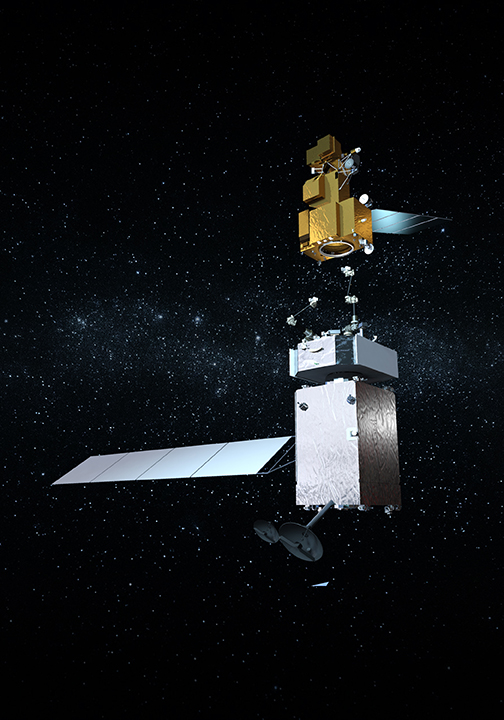By Jean-Jacques DeLisle, contributing writer
It’s a lonely and quiet life in space for a satellite. Once deployed in geosynchronous orbit, satellites are basically left to fend for themselves, unable to be repaired, refueled, or recalibrated. DARPA and NASA’s new joint venture is to create a type of service satellite known as the Restore-L, a robotic mechanic capable of performing sophisticated repairs to our satellites that are already stuck in Earth’s orbit. This new development in technology will be implemented to drastically increase the usefulness and lifespan of aging satellites that can still serve a genuine purpose to the government and other companies. The longevity of these key satellites will be furthered instead of being abandoned to join the space graveyard filled with billions of dollars of dead satellites that have either run out of fuel or experienced technical malfunctions.
Gordon Roesler, the program manager at DARPA, posed a valid question concerning the neglected spacecraft: “Where else do we build something that costs a billion dollars and then never inspect it, never maintain it, and never repair it?” Never before has a DARPA manager made more sense. Investing the time and money that it would require to repair our existing satellites is far more cost-effective then just waiting for them to casually fall out of orbit and launching a new one to take its place. Considering how important satellites are to nearly everyone on the planet, it is essential that we have the ability to maintain them.

Concept art of the Restore-L. Image source: NASA.
The satellite graveyard is located roughly 22,000 miles away from the planet, and some satellites there are traveling at speeds up to 17,500 mph. This orbit level above Earth is also the home to classified government spy satellites and commercial satellites like those owned by DirecTV. Once fully operational, Restore-L and future versions will be able to rendezvous with these multi-billion dollar expenditures in near-space. Utilizing its high-tech Robotic Servicing Arm, the Restore-L will be providing much-needed maintenance and refueling to adrift satellites. Guiding this robot in space will be a tricky endeavor, even with the help of Raven, a sophisticated module on the International Space Station (ISS) that will let NASA test key elements of its new spacecraft autopilot system. Due to the distance from Earth, the Restore-L will have to do some of the piloting itself.
Other interesting questions have also been raised about the integrity of this satellite servicing program, for there are some concerns that this new technology could be weaponized and used to sabotage other enemy satellites. In the event of an orbital tech war, the Restore-L might even be used to hack other satellites, performing interstellar espionage. Space is one of the Pentagon’s top priorities according to National Security Strategy, and they issued a warning: “Any harmful interference with or an attack upon critical components of our space architecture that directly affects this vital U.S. interest will be met with a deliberate response at a time, place, manner, and domain of our choosing.” DARPA also made another statement regarding the Restore-L having the capability to determine if any of our satellites have been tampered with, a statement that makes you wonder.
Though DARPA claims that this seemingly harmless technology is in no way intended for warfare purposes, one could be safe in assuming that they will do what is necessary to protect our national security. Looking to the future of Restore-L, we can expect to see many more advancements in this billion-dollar satellite industry. And for better or for worse, satellites are an integral part of our lives and will continue to be for years to come.
Advertisement
Learn more about Electronic Products Magazine





